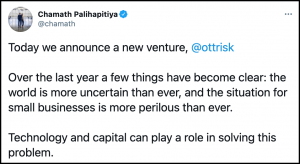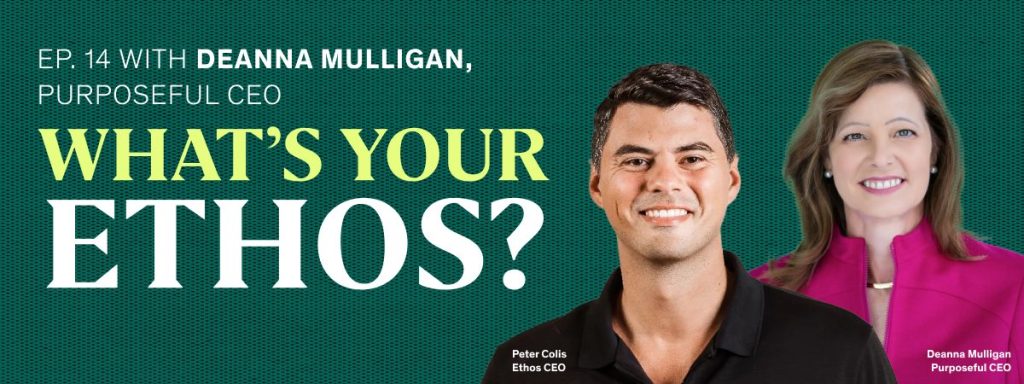Insurtech 2.0 to the rescue – will OTTRSK blaze a new trail in insurtech and fintech?
Over the past 5 years, Insurtech 1.0 was mainly about a lot of technologists who were transporting their CX obsession, (from other sectors – think Amazon in retail) into insurance. The thought process was something like, “it should not be so difficult to buy insurance, if we make it easy to buy then people will buy more”. Sounds reasonable enough and for the most part, companies like Lemonade have had tremendous growth and no one really could make a valid case that these new entrants weren’t making it simpler to buy insurance. Problem is, these new entrants were focused on mass-market lines of business, which were and still are super competitive, with thin margins, often requiring discount pricing to churn customers. Insurtech 1.0 has yet to even hint at a risk-bearing company that can become financially successful without economic gimmicks.
We may now just be stumbling into Insurtech 2.0 as a new breed of investors and entrepreneurs are coming in and forging a slightly different path. Recently Chamath Palihapitiya made a couple of big splashes in the insurance space. You probably have heard of Chamath, but if not, you will soon. Morning Brew calls him the “second most famous billionaire on Twitter”. A billionaire from Facebook, Chamath is CEO of the venture firm, Social Capital, and has been in the news a lot lately as an aggressive proponent and financier of SPACs. Around Thanksgiving of 2020, Chamath announced that one of his SPACs would be used to take Metromile public.
What was interesting about this was that it smelled of more of an old-school financial arrangement to capitalize on a market that has weirdly found insurance sexy. This is old-school in that, insurance has always been a financial services industry, where even with terrible products, companies can be and have been successful just because they have financial heft. The financial heft, in this case, are billionaires in the form of Chamath Palihapitiya and Mark Cuban along with insurance powerhouses, Cohen & Company, and Hudson Structured (HSCM). In this one transaction, Insurtech 2.0 is coming to the rescue of Insurtech 1.0.
Two weeks ago, Chamath was at it again, but this time, I found his press release to be even more interesting for Insurtech 2.0.
Announced in a tweet, OTTRSK was born:

Unlike Insurtech 1.0, if Chamath’s actions in the past 2-3 months are any indication about what I foresee happening in Insurtech 2.0, then quoting Carrie Bradshaw, Me Likey!
At the risk of appearing overly bullish, my excitement over this has more to do with the promise of technology and sound business and startup principles vs the players involved. I have not hidden my disappointment at companies like Lemonade, who as the darling of Insurtech 1.0 paraded a series of buzzwordy investor-friendly business models, constantly trying to bingo the right set of words or images versus making a real dent in this industry and solving some really massive problems. No, this announcement was quite different.
First, the problem that OTTRISK is tackling is noteworthy: business interruption. So while it is true that business interruption is making headlines due to the amount of business lost during the pandemic, what the past year has taught business leaders is just how much more existential risk businesses have from business interruption. Boards of Directors, seeing the devastation of lost business from the pandemic are now demanding to know what their business risks are should a natural disaster of other catastrophe occur. Having brokered business interruption, until last year, it was not on the priority list of Boards, Risk Manager, Brokers or most anyone. It was an afterthought. A very costly afterthought. So OTTRSK tackling this as priority #1 is indeed timely and noteworthy.
More importantly, this coverage exposure has all of the characteristics that entrepreneurs would generally salivate over:
- Underserved Customers– Businesses are drastically underinsured for business interruption losses.
- Terrible Outcomes – Indemnifying business interruption losses is an adjustment nightmare in most cases. A claim conflict is almost inevitable because business interruption losses are an accounting issue. It’s not about loss of revenue or profit but about accounting for the complexities of what revenue was actually lost, what expenses were actually saved and tallying all that up often requires a forensic accountant. It can take months to adjust even in the best of situations (my sister had a plumbing leak from a nearby business that closed her down and it took over 2 months before the claim was settled and this was an easy case). Throw in a natural disaster or calamity and society just doesn’t invest in training enough forensic accountants to handle such a situation.
- Capacity Challenged – Insurers dislike offering coverage. Even they recognize a claim conflict is inevitable. They would prefer to simply adjust the building and contents loss and call it a day. In cases of business interruption losses, most insurers would prefer to step aside, it is not in their wheelhouse.
- Desperately Seeking Technology. There’s got to be a better way to do this – Getting coverage stinks (I won’t bore you with the Business Interruption worksheets that need to be completed in order to get coverage). The claims experience stinks too. Sounds like the type of problem a technologist would be eager to solve! With digitized accounting solutions and with advancements in IoT, AI, machine learning and cloud computing, don’t we have enough tools to solve this?
Demand is growing, supply will be dwindling as carriers continue to pull back from offering business interruption coverage and the CX is horrible. Not only is this a big Blue Ocean, but given the economic dynamics in place, finding product/market fit won’t be nearly as challenging compared to some other domains as customers will be lining up to get access to any potential source of capacity, especially one that reduces friction and could be enduring.
Finally, what makes this launch even more satisfying is that the economics that I described above should allow for some meaty margins. It’s easy to sell $1.00 for $0.50 but my expectation is that this product will be able to charge an actuarial acceptable rate plus some. While I will reserve my opinion on what AI or machine learning can do here, this has a really sweet set of characteristics that should create a margin of safety for underwriting on day 1. This will make the business quite attractive initially and make access to capital even easier than it has been for Insurtech 1.0. For them to become really, really big, like Uber big, they will need that capital. There is a branding opportunity and a chance to accumulate precious market share with few competitors very early. In this first launch, OTTRSK will be partnering with ILS heavyweights Nephila Capital and analytics platform Premise Data – because why waste time trying to reinvent the wheel inhouse…especially when it’s your own capital and skin in the game, which makes this even more interesting than it OTT to be (I predict a lot of wordplay with their marketing).
Insurtech 1.0 was all about the technologists forging a frontal assault on insurance. We are at the dawn of Insurtech 2.0 where we combine lessons learned in 1.0 and add real modern business fundamentals. In future articles, I expect to formulate the bearish case for these companies, but the bullish case is indeed noteworthy and remarkable.




